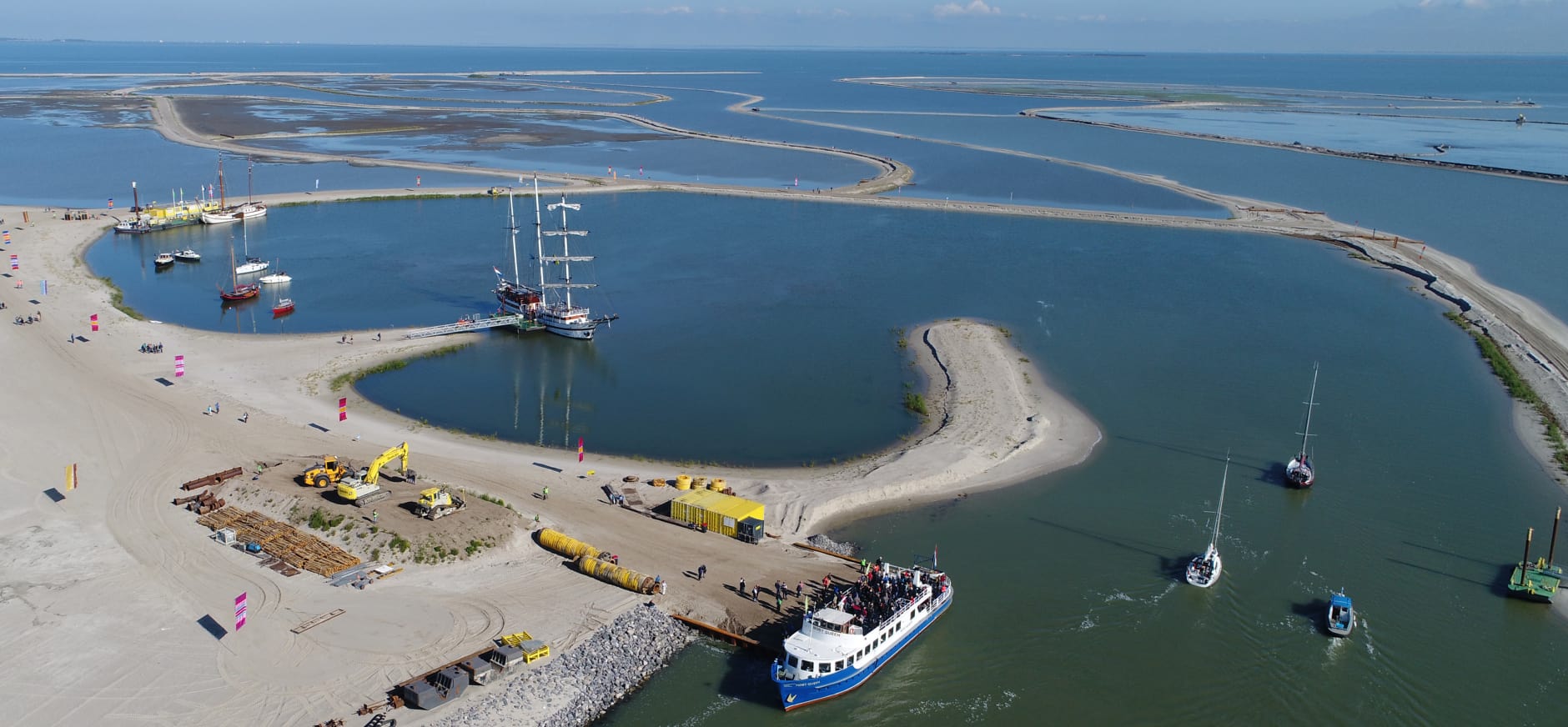Collaboration and planning
The Marker Wadden project will be implemented in a number of steps. The first phase will be carried out by Natuurmonumenten and Rijkswaterstaat (Department of Public Works, Ministry of Infrastructure and the Environment), and involves construction of one nature island (5 km2) and an 'underwater landscape' of spawning areas and shallow and deep channels (10 km2). The costs of this first phase amount to 75 million euros.

So far, an amount of 50 million euros has been raised by Natuurmonumenten, the Dutch National Postcode Lottery, the Dutch government and the province of Flevoland. Following a comprehensive tendering process, Boskalis has been selected to carry out the Marker Wadden project. Preliminary work for building the first nature island will commence in spring 2016. This first island will serve as a test case for the other islands, which are to be built between the first island and the Houtribdijk dam in a later phase of the project. Ultimately the Marker Wadden should cover an area of 100 square kilometres.
Unique collaboration
A broad consortium of government, business and nonprofit organisations will be working together in the first phase of the Marker Wadden project to improve the ecological quality of the Markermeer and to build a beautiful nature island. Rijkswaterstaat and Natuurmonumenten, in particular, have been working closely together since 2013 to get this project off the ground. An official collaborative agreement was signed in 2014.
Time schedule for the first phase of the Marker Wadden project
- 2014 and 2015Tendering stage
- 2016Start construction of the first nature island
- summer 2018The first part of the nature island is realised (1 km2)
- the end of 2020The first nature island is completed (5 km2)
What to expect?
The first island of the Marker Wadden project will be constructed at about four kilometres from the dam between Enkhuizen and Lelystad. On and around the island a landscape will develop with reed marshes, mud flats and shallow littoral zones, where aquatic plants and invertebrates, fish and birds will thrive. The island will also have a boat landing stage and a sandy beach.
The vast expanse of water, wide skies and broad horizons are important qualities of the Markermeer. Therefore the islands will be constructed far enough from the lake shores to not interrupt the view. From the dam between Enkhuizen and Lelystad the first island will be just visible in the distance. Visibility will also depend on whether trees will grow on the island. Although forest development is part of natural vegetation succession, the design and management of the islands will most likely result in a landscape dominated by open water, marshland with reed and bulrush, and shrub vegetation. Visitors to the islands will enjoy the magnificent views from the island shores.
Showcase of Dutch water engineering expertise
The construction of the nature islands in the Markermeer will be an enormous technical challenge. Innovative techniques will be required to keep the costs as low as possible. The project offers an excellent opportunity to develop and showcase Dutch expertise on 'building with nature'.
'Building with nature' makes use of natural processes to develop sustainable engineering solutions that benefit both humans and nature. In the case of the Marker Wadden project, building with nature involves developing 'soft', natural flood defences, and using natural sediment transport processes to reduce turbidity and build islands with lake sediments. Close to the location of the first island a deep channel will be dug, in which large amounts of sediment will accumulate due to natural flow patterns and gravity. The trapped sediment will be used to build the islands. The Marker Wadden will be one of the flagship projects of the Dutch water engineering sector. This project will help to promote the export of Dutch expertise on 'Building with nature', particularly in the areas of flood protection, water quality improvement and sediment management. Read more about 'Building with Nature (website) '.